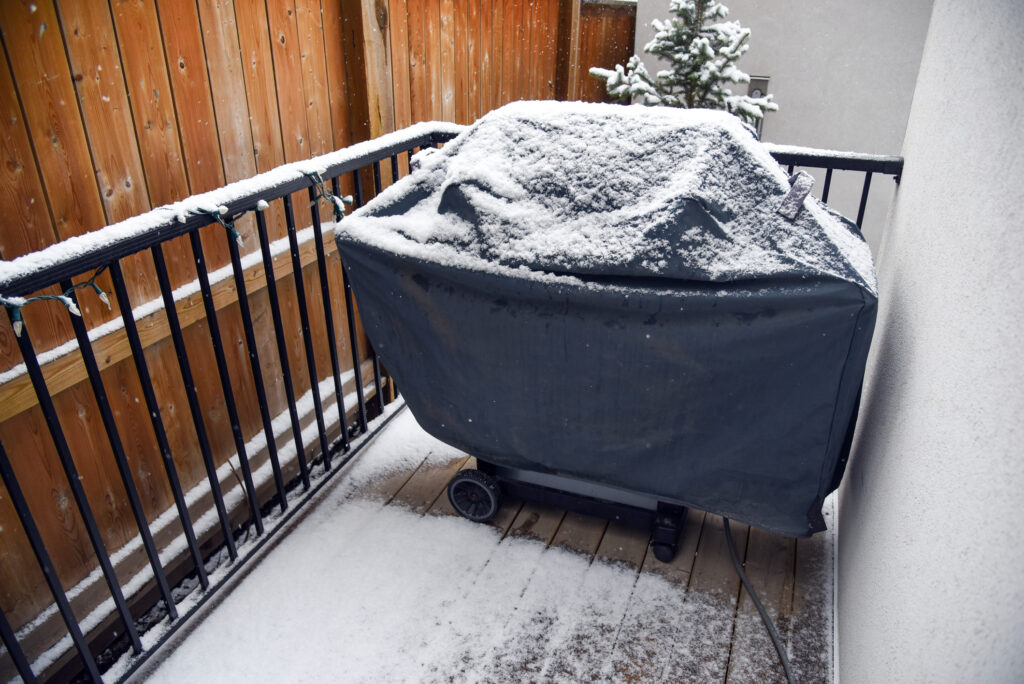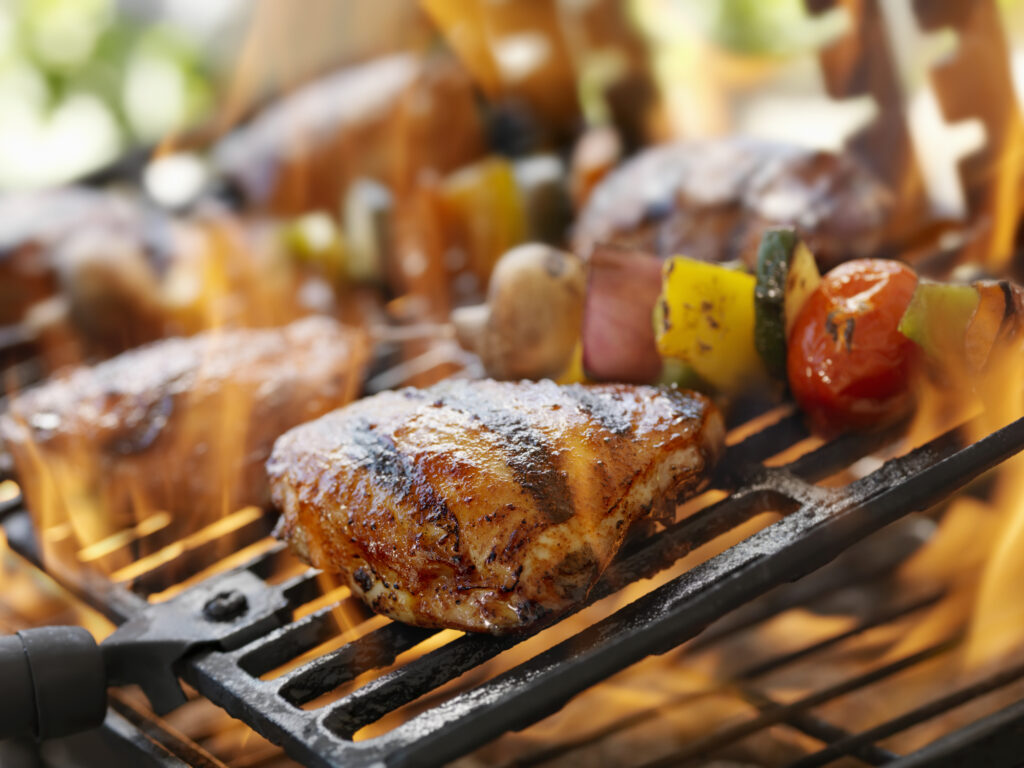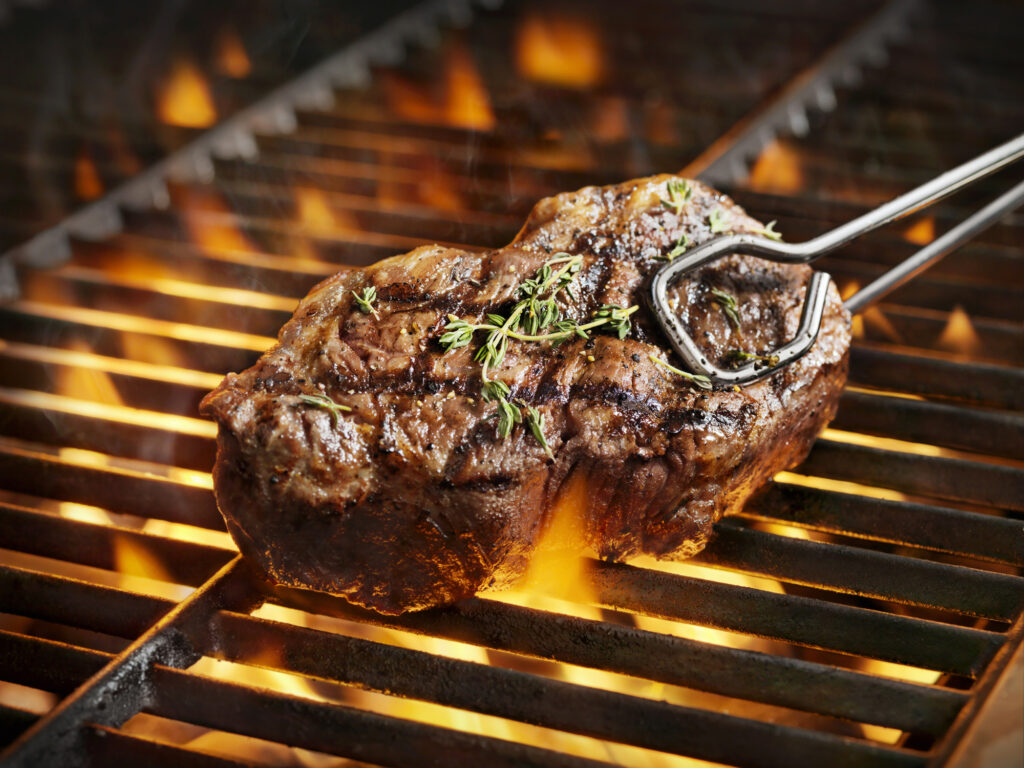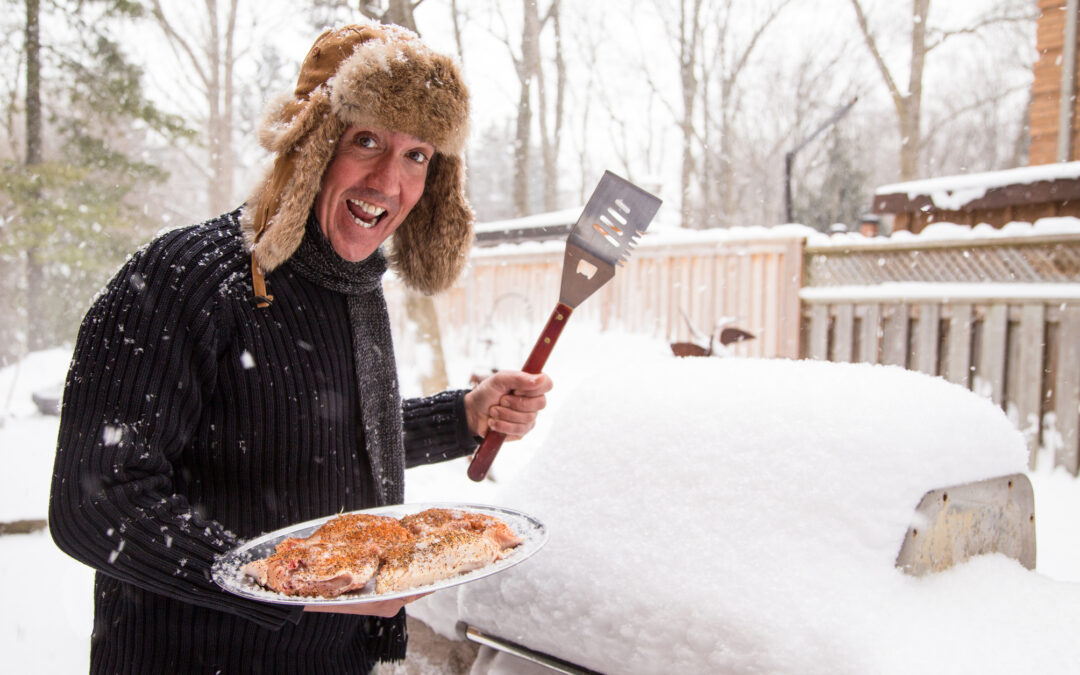True outdoor cooking enthusiasts aren’t afraid of winter. Snow? Bring a shovel. Cold? Not a problem. Ice? Pfft – it’s nothing!
That said, there’s no getting around the fact that in the winter…
- It takes longer for your grill to preheat
- Some grills won’t get all the way up to the hottest temperature they can in the summer
- Wind and cold can make maintaining lower temperatures harder to do
- The “go outside and hang around the grill” factor is pretty much gone
How to Grill Well in the winter
So, this all said, here are some thoughts and ideas to help you keep on grilling, smoking, and making those yummy foods all winter long with your favorite Griller’s Gold pellets as the fuel!
Situating your Grill for Best Winter Results
Just like real estate success, grilling success in the winter is helped a lot by location, location, location.
If you can do it, the best thing to do is to move your grill as close to your house as possible – the ideal is just out a door, and even better, is in a spot just out the door that is somewhat sheltered from the wind. The easier it is for you to get out the door and tend the grill, the more likely you are to be using it in the winter.

Many grillers keep their grills in the garage when not in use, and roll them out for use – this works well of course, but the challenge is often the wind. One easy idea is to arrange your cars or vehicles to help block the wind.
As always, of course, safety first! Follow your grill manufacturer’s recommendations in terms of proximity to your home, and NEVER grill in an enclosed space like an attached garage – the carbon monoxide can permeate into your home with disastrous results. You should also never grill in the garage in case of a flare-up or worse. Use common sense, but know that you’re solving for convenience and a little bit of wind protection.
And the last idea – while it’s a bit of an investment, a patio heater makes a world of difference in the enjoyment of outdoor cooking. A cold night with little wind, the heater fired up right near the grill with a proper cocktail in hand, and you’ll stay outside with the grill just like in the summer!
Cooking Methods in the Winter:
Generally speaking, most grills struggle when it comes to maintaining evenly controlled temperatures in windy and cold conditions. Therefore, a nice, long, low and slow cook may not work well unless it is a relatively warm and calm day. If you’ve got a nice day in the 30s or 40sF with minimal wind, by all means, roll smoke for the low and slow, but that’s not going to work well on a day that’s 10F with a 20 mph arctic breeze blowing on your grill, sucking away your heat.
Hot and Fast
Rule #1 of successful winter grilling is “Hot and Fast.”
Using Hot and Fast as the rule – higher heat, shorter cook times, helps ensure that you get good results. You will find there are a number of recipes out there for Hot and Fast Brisket, Hot and Fast Ribs, etc. All of those are great for doing in the winter, and we have a short hot and fast primer at the end of this article. This said it all comes with rule #2 … Know your grill!

Know Your Grill
Knowing your grill means, knowing what temperature you need to set your controller on to get the desired temperature in the enclosure of the grill.
Thermostatic controlled grills, like most pellet grills, if things are well adjusted, will deliver an AVERAGE temperature of the setpoint temp. However, that temp will swing as much as 20 degrees over and under the setpoint.
In the winter, your swings will largely be under the setpoint – your grill will get to the setpoint, stop feeding pellets, but the icy wind blowing by your grill will rapidly cool it back off.
The best way to deal with this is to use a remote thermometer to monitor the internal air temp of the grill. If you find that the grill temp looks to be lower most of the time than your setpoint, boost your setpoint up until you start seeing the right temp more often on your remote thermometer.
And finally, there’s the easy method which is “crank it and go!” This is simple – set your pellet grill for max heat and let her get good and hot and start cooking! For the charcoal and gas grill folks, this means building a big fire or setting it on high and cooking hot over direct heat.
What to Cook and How To Cook:
Foods that do well in either “hot and fast” or “crank it and go” are things like
- Chicken Parts
- Steaks and Chops
- Burgers
- Sausages
- Shrimp
- Fish
- Vegetables
- Small pork loin roasts
- Thinner beef roasts like a London Broil

And we all know how to cook these, right? Crank the heat, toss it on, give it a flip, remove when done.
That said, here are some good hints to help you cook better grilled food in the winter:
- Allow extra time to preheat
Baby, it’s cold outside – and just like your car or truck on a cold morning, your grill needs extra time to get warm! Don’t be tempted to put the food on before it hits the desired temp – you’ll never recover from that. - Flip Often
On things like steaks and chops, particularly when they are thicker cuts (up to 1 ½” or more, you may find that turning them more often – say every 2-3 minutes – rather than just once during the cook time will result in a more even doneness. In the winter, the enclosure of your grill will likely be cooler than normal and the majority of the heat is rising from below. These frequent flips help the heat penetrate the meat evenly. - Avoid recipes that require a temperature change
Those temp changes take much longer in the winter than they do in the summer. Best to just get it hot and fast first. - Cook everything together
Let’s face it, this is more for you than the food, but maximize your grill space usage. Doing veggies and meat? Get those veggies on with the meat so you make fewer trips to the grill. - “Mis en place”
Yeah, we’re getting some French cooking method on you here. That phrase generally means “gather everything you need before you start.” Because your cook times will be faster and shorter, make sure you have everything ready to go before you put the food on the grill.
So there ya go! Ok now, we know that you will want to also try the Hot and Fast method for things like Brisket or Ribs.
Primer for Hot and Fast Brisket or Ribs:

Buy:
Whole packer briskets if doing brisket and baby back ribs if doing ribs. A packer brisket will retain more juice in this hot and fast method, same with the ribs.
Trim:
On the brisket, because it has less cooking time, be sure to butcher out the large pieces of hard white fat between the muscles. Check YouTube for how to do this.
Moisture and Rub:
Try slathering your ribs or brisket with a good coating of yellow mustard prior to applying your favorite rub. This will help add moisture to the meat.
Heat:
You want your grill to be delivering 325 degrees heat – so per the “know your grill” section above, set your grill accordingly.
Leave it Alone:
Don’t check it every 20 minutes or whatever you do when the weather is warm. Every time you lift the cover on your grill, you’re losing valuable heat. Leave a brisket on at least 4 hours before looking the first time and leave ribs at least 2 hours.
Texas Crutch:
Just like low and slow, the stall is real. And if you choose to do a Texas Crutch, know that fat-soaked butcher paper is pretty flammable. So consider using foil if you’re going to do the Texas Crutch. It will greatly accelerate your cook time.
Doneness:
A whole packer brisket will be done in 4-6 hours using this method, and ribs will be done in 2 ½ to 3 hours at these temperatures. Brisket is done when about 200 degrees internal temp deep in the center of the meat. Ribs are done when they split when you bend them (aka “the crack test”).
There are a lot of good resources online for Hot and Fast barbecue methods. Be sure to check them out!
Good Grilling!
